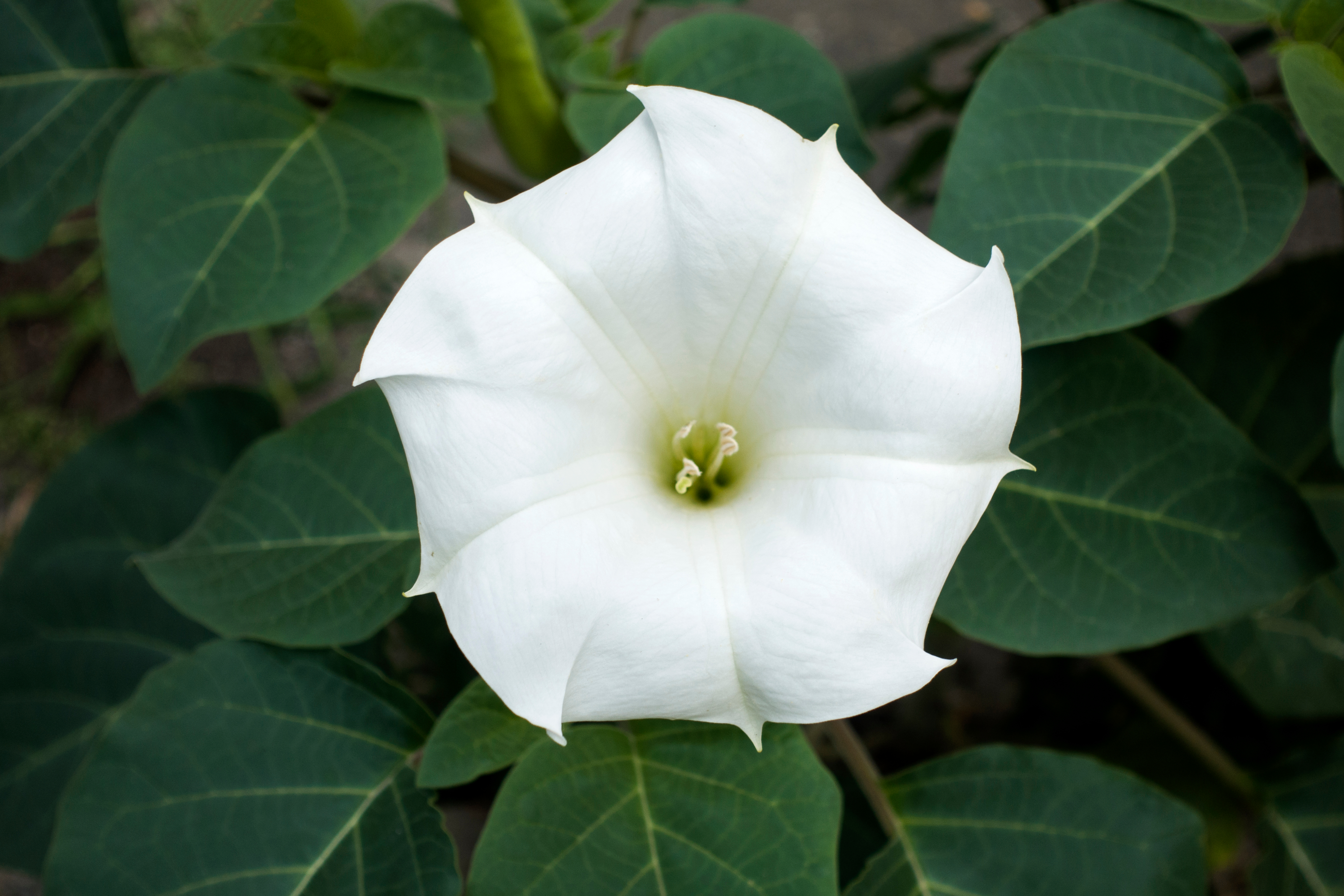Pricklyburr
(Datura inoxia)

Description
Datura innoxia (often spelled inoxia), known as pricklyburr, recurved thorn-apple, downy thorn-apple, Indian-apple, lovache, moonflower, nacazcul, toloatzin, toloaxihuitl, tolguache or toloache, is a species of flowering plant in the family Solanaceae. It is more rarely called sacred datura, a common name which is applied more often to the closely related Datura wrightii. It is native to the Southwestern United States, Central and South America, and introduced in Africa, Asia, Australia and Europe. The scientific name is often cited as D. innoxia. When English botanist Philip Miller first described the species in 1768, he misspelled the Latin word innoxia (inoffensive) when naming it D. inoxia. The name Datura meteloides was for some time erroneously applied to some members of the species, but that name has now been abandoned. Datura innoxia is a tuberous-rooted, subshrub that typically reaches a height of 0.6 to 1.5 metres. Its stems and leaves are covered with short and soft grayish hairs, giving the whole plant a grayish appearance. It has elliptic smooth-edged leaves with pinnate venation. All parts of the plant emit a foul odor similar to rancid peanut butter when crushed or bruised, although most people find the fragrance of the flowers to be quite pleasant when they bloom at night. The flowers are white, trumpet-shaped, 12–19 cm (4.5–7.5 in) long. They first grow upright, and later incline downward. It flowers from early summer until late fall. The fruit is an egg-shaped spiny capsule, about 5 cm in diameter. Like those of other species belonging to section Dutra of the genus Datura, it splits open irregularly when ripe to disperse its seeds. Another means of dispersal may also occur, in which the spiny fruit becomes entangled in the fur of animals, who then carry the fruit far from the mother plant. The seeds are long-lived, having the ability to lie dormant in the soil for many years. The seeds and indeed the whole plant, have strongly deliriant properties and a high potential for overdose, the slow appearance of the effects leading to the erroneous belief that the dose taken has been ineffective. The currently-accepted botanical name for this plant is Datura innoxia, in spite of the fact that many references spell it Datura inoxia. According to Tropicos, a widely accepted authority on botanical names, the inoxia form is due to an error originally made by 18th century taxonomist Philip Miller, and since corrected.
Taxonomic tree:







